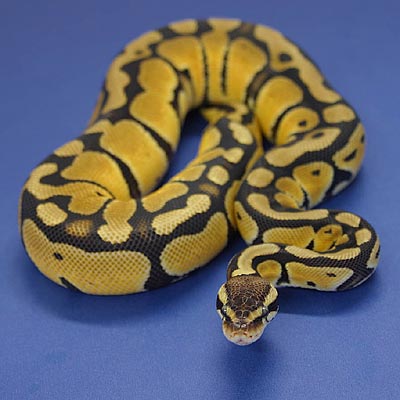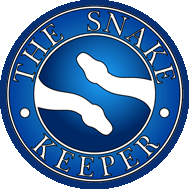With the tremendous number of imported ball pythons that come into the country on an annual basis and with the ever increasing number of captive bred ball pythons that are being produced it seems that there is a new morph appearing at least once a month.
When the question, What makes a ball python a morph? was asked of several different breeders the answers given consistently contained two main points. The first requirement was that the ball pythons appearance must be distinctly and significantly different than normal (wild type), and secondly the appearance must be an inheritable trait.
Requirement 1 - The appearance of the ball python must be significantly and distinctly different than wild type, or normal color and pattern.

Ball pythons are tremendously variable. Some are brightly colored and will immediately catch your eye. Others may have markings on the face and top of the head that will seem to set them apart from the rest, but many times these markings are only a part of the wide variation seen in normal ball pythons. Here we have included some photographs of what we consider nice normal ball pythons. Each of the above ball pythons has some nice characteristics that set it apart from a portion of the general ball python population, but the characteristics are still widely found on hundreds of ball pythons. A person only needs to look at the widely accepted genetically proven morphs to understand the full meaning of distinctly and significantly different than wild type.
Requirement 2 The appearance must be an inheritable trait.
There are several types of inheritable traits, simple recessive, codominant, dominant and those that are attained through the process of artificial selection.
- Simple recessive mutations can only be produced if both the male and female carry at least one gene for the specific trait that is being bred for. See Genetically Speaking for more information.
- Codominant mutations can be produced when only one of the parents is the gene carrier. A mutation is codominant when the phenotype in the heterozygous form has a different appearance than in the homozygous form and both appearances are different than normal. In other words the homozygous ball python looks different than the heterozygous form and both look different than a normal ball python. See Genetically Speaking for more information.
- Dominant mutations can also be produced when only one of the parents is the gene carrier. A mutation is dominant when the phenotype in the heterozygous form has the same appearance as in the homozygous form. This appearance is also different than normal. In other words, the two look the same. The only way to tell which is the homozygous is through breeding efforts. See Genetically Speaking for more information.
-
The last type of inheritance is more complex. It involves the process of selectively breeding similar animals over several generations to enhance the traits that they display. This process is known as artificial selection. An excellent example of artificial selection was the creation of the Banana California Kingsnake. California Kingsnakes, in some areas, are dark brown and yellow. Some specimens were found that had more yellow than most. These were bred together and some of their offspring had increased yellow. Those with the most yellow were bred together and so on and so on. After many generations the Banana California Kingsnake became a reality. With this type of genetic variation there are no heterozygous snakes and it is neither a dominant nor a codominant trait.
There are many examples of this type of inheritance in the ball python. When two similar ball pythons are bred together it is not unusual for some of the hatchlings to look like one or both of the parents. Through the process of artificial selection it may become possible to consistently produce ball pythons with the desired traits that the original parent or parents exhibited. Black backed ball pythons, banded ball pythons and many others have markings or colors that are commonly found through out the general ball python population. These ball pythons when bred together, or bred to a normal, (wild type individual) will produce some hatchlings that will have some of the parent(s) markings and or coloring. Through the process of artificial selection the desired traits can be refined until they are expressed to the breeders satisfaction. These traits will still not be inherited as simple recessive, dominant or codominant. They will always remain traits that will need to be pursued through the process of artificial selection.



 netviper digital studio
netviper digital studio